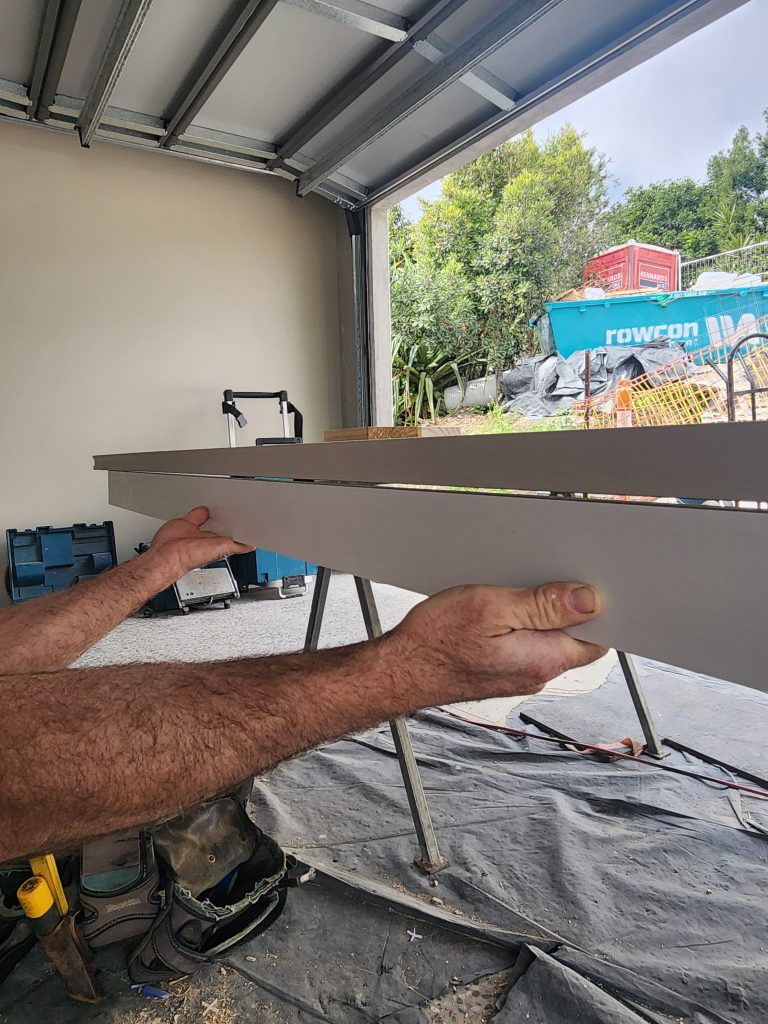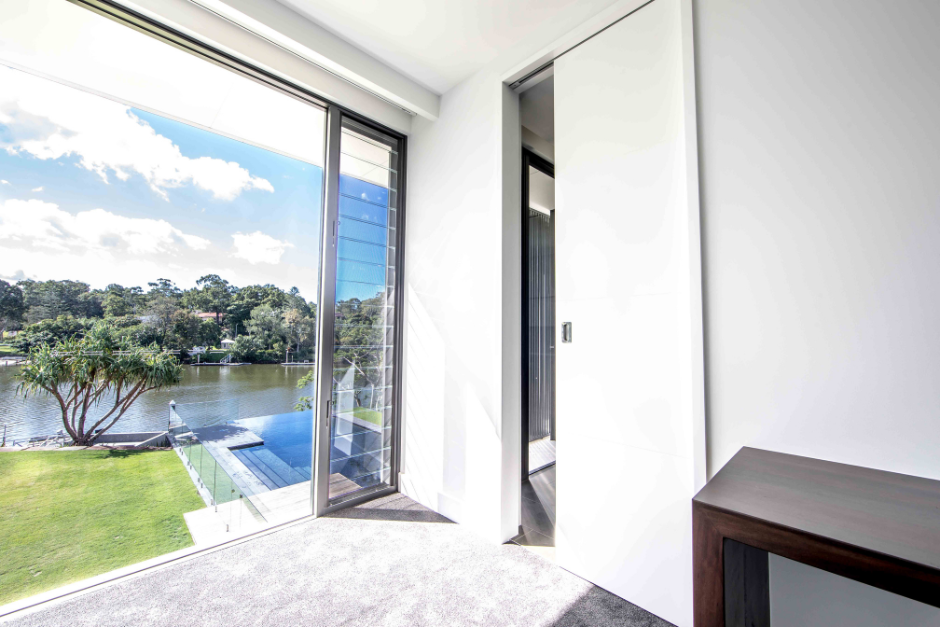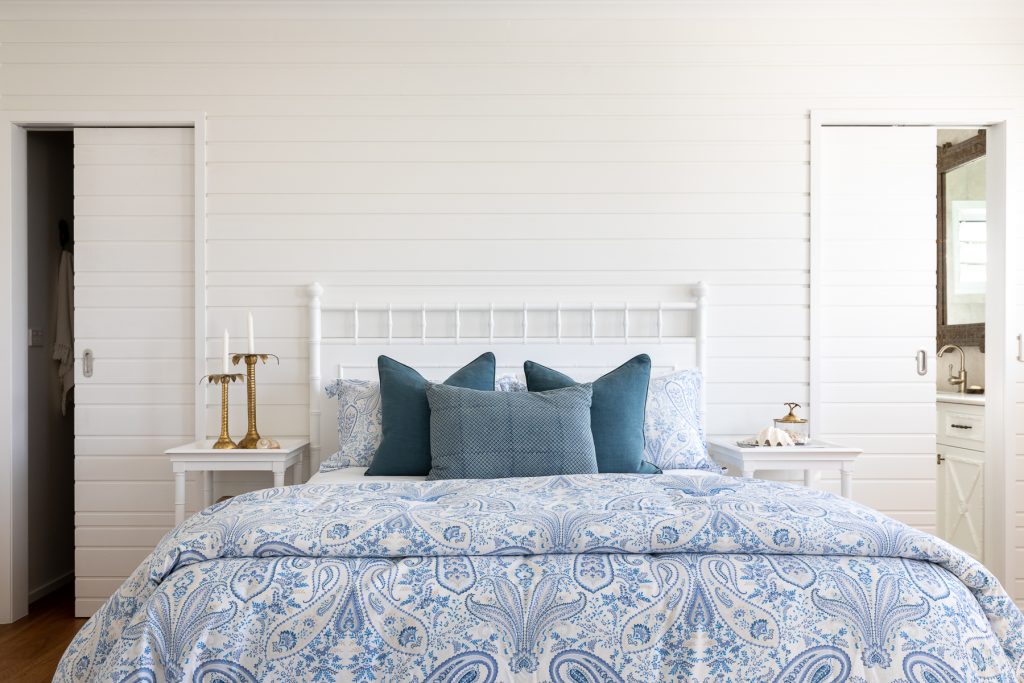Doors are more than just functional elements in a building; they play a vital role in the overall aesthetics and usability of spaces. However, issues such as bowing and warping can severely impact their functionality, especially in pocket door systems where minimal clearances mean even slight deformations can result in scraping inside the pocket or hindering smooth operation. This is particularly significant with taller, floor to ceiling doors, which are prone to bowing if not properly cared for. Here, we explore why doors bow, how temperature and moisture affect their straightness, and the crucial steps to take when handling, storing, and sealing doors to prevent these issues.
Why Do Doors Bow?
Doors bow when the wood within them absorbs or releases moisture unevenly, causing one side of the door to shrink or swell more than the other. This imbalance results in a curved, or “bowed,” appearance. Environmental factors such as changes in humidity, moisture exposure, and fluctuating temperatures can accelerate this process, affecting the stability of the door.
Wood, being a hygroscopic material, readily absorbs or expels moisture depending on its surroundings. When doors are exposed to high humidity, they may expand; when exposed to dry conditions, they may shrink. If this process happens unevenly, such as when one side of the door faces a different temperature or moisture level than the other (common in improperly sealed doors), bowing occurs. Bowing is not just an aesthetic issue but can lead to functional problems, particularly in interior sliding doors or pocket doors, which rely on precise clearances.

How Moisture and Temperature Affect Door Straightness
Doors that are exposed to fluctuating moisture levels or temperature changes are highly susceptible to warping. In high-humidity environments, wood absorbs moisture and swells, which can cause bowing. Conversely, in dry conditions, the wood loses moisture, leading to shrinkage. If the door is not properly sealed, moisture will penetrate the wood unevenly, increasing the likelihood of warping.
Temperature changes further complicate the issue, as wood expands when warm and contracts when cool. For pocket door systems or taller doors, this can cause serious issues due to the tight tolerances within the frame. If a door bows inside its pocket, it may scrape against the sides, damaging both the door and the surrounding structure. For taller internal sliding doors, even a small amount of warping can make them difficult to open or close properly.

How to Store Doors Correctly
Proper storage of doors before installation is critical to maintaining their structural integrity. Doors should be stored flat on equal-sized packing boards in a dry, well-ventilated area, away from direct sunlight, moisture, and other environmental factors that could cause them to warp. Doors must not be stacked directly on the ground, as this can expose them to dampness and humidity, which can cause bowing. Avoid storing them in freshly plastered or damp areas, as this can increase their moisture content abnormally.
To allow for acclimatization, doors should be conditioned to the building environment before installation. This minimizes the risk of warping as they adjust to the site’s specific temperature and humidity levels.
How to Treat Doors Upon Receiving Them
The moment doors arrive on-site, they need to be treated with care to prevent warping or bowing. As outlined in AS 2688:2017, it is crucial that doors are sealed on all four edges and both faces within seven days of arrival. The sealer used should effectively prevent moisture from being absorbed into or expelled from the door. Failure to carry out this sealing will void any warranty on the product. It’s important to note that using water-based sealers or diluted paints will not properly seal the door and may lead to long-term damage.
Importance of Sealing All Edges Prior to Installation
Before installation, at least the bottom edge of the door must receive a waterproof undercoat to prevent moisture absorption. Once the door is hung, it must be finished with a minimum of two coats of waterproof paint, varnish, or sealer, including the top edge. This process ensures that the door is fully sealed and protected against moisture fluctuations, which is especially important for external doors exposed to the elements or doors installed in humid environments.
Sealing the entire door, including all edges and grooves, is not just a recommendation but an essential requirement under AS 2688:2017. Ensuring that doors are properly sealed before installation can significantly reduce the risk of warping, bowing, or cracking, helping to maintain both the functionality and appearance of the door.

Final Thoughts
Proper care, storage, and sealing are crucial to maintaining the longevity and functionality of doors. This is especially true for pocket door systems and taller doors, where even the slightest bowing can cause significant operational issues. Following the outlined guidelines and ensuring doors are sealed in accordance with AS 2688:2017 will help prevent problems, ensuring smooth operation and extending the lifespan of your doors.
